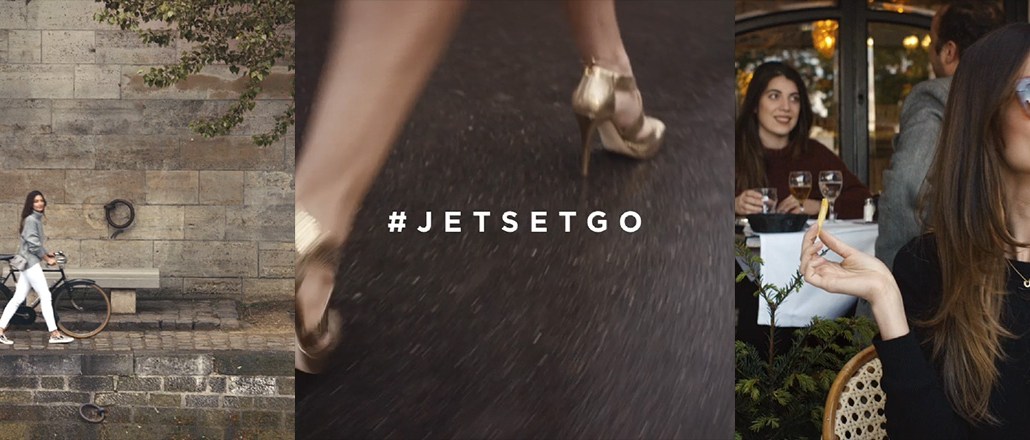
What happens when you open Instagram to app install ads and shopping buttons? Direct-response marketers come flooding in.
The image-sharing app has seen an increase in brands advertising there, and some of its latest ad products are having early success, according to two new reports out today. For instance, one partner, Nanigans, has seen 31 percent of its advertisers run direct-response campaigns there, according to numbers it released today.
Instagram has seen this surge in marketing activity since it opened sales to outside parties this summer. It’s unclear how many ads run in the average Instagram feed, but some say the sponsored posts have come down in quality as more marketers come on board.
Instagram, which is owned by Facebook and deeply linked to its marketing machine, launched so-called shoppable ads this summer, which let users click through to buy promoted products. It also developed a video format called Marquee ads, which captures the high-style vibe that characterized early Instagram ads and are mainly for major branding initiatives, such as product launches.
There also are carousel ads that present multiple images in one post. All the marketing products can be tied back to Facebook for advertisers to carefully tune and target campaigns.
Instagram is looking for a balance between the need for quality ad experiences and mass marketing opportunities. It also has to compete with Pinterest, Twitter and others, which have all pushed into shopping and link-based ads.
Instagram has experimented with ever more immediate shopping actions, according to sources. Instagram has tried to do one-click sales that let people make purchases without even stepping away from the main feed, and a source said those trials did not go well. There were just a handful of sales.
“Consumers are still hesitant and just not in the mindset to checkout from a social network,” said the creative agency executive. “The problem with ‘buy it now’ is it has to be linked to a credit card.”
Still, e-commerce advertisers use Instagram to generate clicks to their sales pages that are outside of the main Instagram experience, according to Instagram tech partner Nanigans.
“The destination of a click will vary based on the individual advertiser’s objective, but generally clicks on mobile app install units will bring people to the app store page and prompt them to download,” a Nanigans rep said. “Clicks on other Instagram ad units bring the user outside of the Instagram app to the advertiser’s owned property be that a landing page or product page.”
Consumers click on ads 1 percent of the time when they are from an e-commerce marketer, Nanigans said. Typical banner ads from the retail sector perform half that well, according to eMarketer figures.
In October, another Instagram technology partner said that carousel ads get a 1 percent click-through rate, too.
Today, Instagram also released new numbers from a Michael Kors campaign that used Marquee video ads to showcase a line of shoes. The strategy used Instagram’s Marquee unit to feature the product line and then Facebook for direct ads, bringing people to its website.
Michael Kors drove 200,000 people to its website in a month, and visits to the product pages increased 2.6 times, Facebook said.
“Following the success of their blast Marquee campaign, the fashion brand harnessed the power of Instagram and Facebook together to increase visits to their website,” Facebook said in its report.
The Nanigans rep said e-commerce advertisers use Instagram ads the most of any sector except maybe gaming. Instagram also has held up e-retailers like Gilt Groupe as examples of successful marketers on the platform.
Nanigans, which helps marketers execute ad buys across social media, reported that 31 percent of its advertising clients now run Instagram campaigns. Instagram already is on par with Facebook in many ways, the company wrote.
“Performance was remarkably similar, with identical click-through-rates and near-equal ad prices between the two platforms,” Nanigans said in its report.
Depending on the objective, ad prices were about 65 cents per click, or between $5.75 and $6 for a thousand views on Instagram and Facebook, the report said.
More in Media

The accidental guardian: How Cloudflare’s Matthew Prince became publishing’s unexpected defender
Cloudflare’s day job is fending off botnets and nation-state cyberattacks, not debating how Google and other AI firms crawl publisher sites.

A timeline of the major deals between publishers and AI tech companies in 2025
Here’s a list of all the major deals signed between publishers and AI tech companies in 2025.

No playbook, just pressure: Publishers eye the rise of agentic browsers
For the bulk of publishers, Google is, as ever, the one to watch. It’s already got agentic features within its Chrome browser, but that’s the tip of the iceberg, some say.





